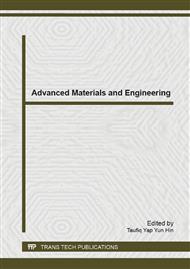p.238
p.242
p.246
p.251
p.257
p.261
p.265
p.270
p.275
Methodology of Taguchi Optimization for Organic Rice Bran to Maximum Antioxidant Activity
Abstract:
The rice bran contains rich vitamin A, vitamin E, amino acid and niacin which are nutrient substances for the skin. These substances can keep moisture, prevent skin drying, postpone skin aging and prevent pigmentation effectively. This study used Taguchi method to plan experiment, and applied solvent extraction to extract organic rice bran concentrate, aiming to obtain the optimal beauty treatment quality. As the parameter setting is the key to the antioxidant activity quality of organic rice bran, it requires considerable costs of money, time and human experience. Therefore, this case study used L9(34) orthogonal array to plan the experimental parameters of solvent extraction which may influence the antioxidant activity of organic rice bran. The signal-to-noise ratio of experimental data was calculated to discuss the experimental results. Afterwards, the response graph was obtained by factor effects, so as to discuss the significant factors influencing the oxidation resistance quality, namely, the oxidation resistance quality characteristic of organic rice bran could be controlled effectively by controlling these factors. Finally, the confirmation experiment validated the reliability and repeatability of this experiment.
Info:
Periodical:
Pages:
257-260
Citation:
Online since:
June 2014
Authors:
Keywords:
Price:
Сopyright:
© 2014 Trans Tech Publications Ltd. All Rights Reserved
Share:
Citation:


